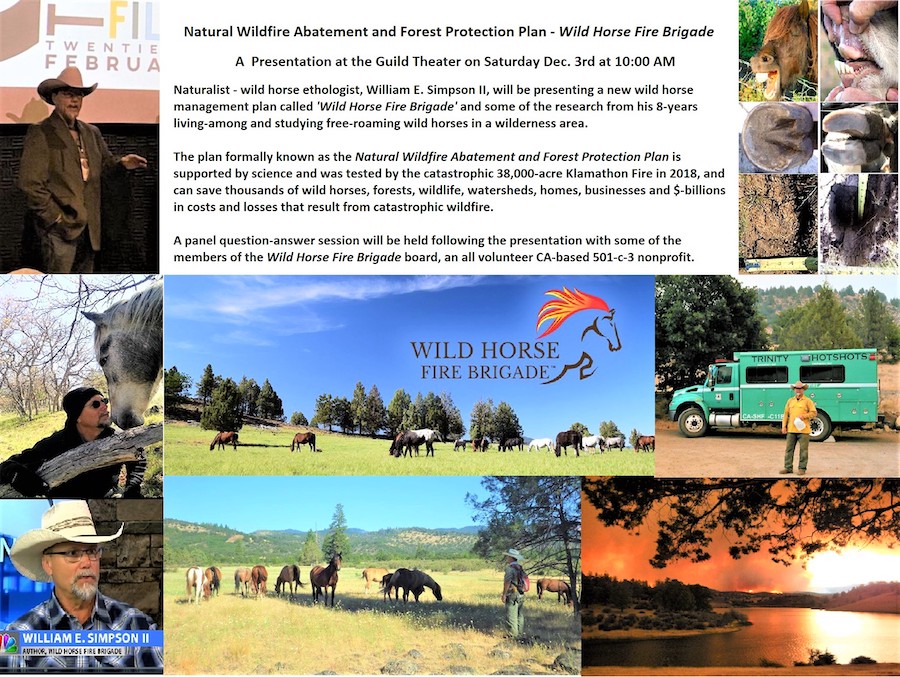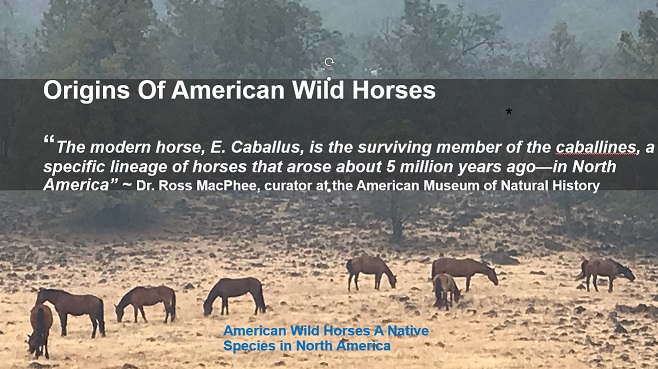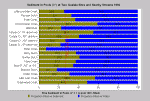Are Prescribed Burns The Silver Bullet Suggested For Wildfires?

“Outside-the-box thinking on prescribed burns, from the founder of Wild Horse Brigade.
NOTE: this article was sent to us, and written by, Willian Simpson on January 5, 2022. It is published here with permission from the author. Feature photo is of the the deadly 2018 Klamathon Fire approaching Camp Creek.
The Question stands: Are some County and State elected officials going to continue selling American Citizens the myth that ‘Prescribed/Controlled/Cultural Burns are somehow a Silver Bullet for reducing catastrophic wildfires?
Empirically speaking, the data we have prove that prescribed burning by any name is not only very costly, it’s led to some of the largest and most expensive wildfire disasters ever!
As we have already seen time and time again, ‘prescribed burning’, also known as ‘controlled burning’ is extremely dangerous, deadly and financially costly in many ways even when used by highly-trained professionals.
The most recent use of prescribed burning by professionals at the United States Forest Service (USFS) turned-disaster was experienced in New Mexico, where two prescribed burns went-wrong, joined together, and became the largest and most costly wildfire disaster in the history of New Mexico.
From the Washington post:
“In a statement, the Forest Service said that what began as a controlled burn in the Santa Fe National Forest in January, meant to clear away vegetation and prevent catastrophic wildfires in the future, turned into a “sleeper fire.” It overwintered beneath the ground, continuing to burn slowly until it re-emerged in early April.
Fueled by strong, gusty winds, the Calf Canyon fire escaped firefighters’ attempts to contain it.
On April 22, it merged with the Hermits Peak fire, which also began as a prescribed burn set by the Forest Service that grew out of control. In the month since then, the combined blazes have destroyed hundreds of homes and displaced thousands of people.”
When it comes to ‘prescribed burning’, ‘controlled burning’ or as it’s now being rebranded as ‘Eco-Cultural Fire’ to confuse taxpayers into thinking it’s somehow safer fire, playing with fire, regardless of who’s doing it or where, results in disaster, time and time again.
An excerpt from a 2015 article from Outside Magazine titled, When Prescribed Burns Go Wrong, clearly shows that the disasters that stem from prescribed burning, are being repeated over and over, as are the evolving explanations and excuses for the disasters:
“Tom Scanlan’s house burned down on an early spring afternoon in March 2012. Just days before, the Colorado State Forest Service had set fire to the dangerously overgrown forest near the Lower North Fork of the Platte River, about 40 miles outside Denver. The controlled burn was supposed to stave off a future blaze; instead, warm temperatures and high winds fanned a wall of flames that torched 1,400 acres, left three people dead, and destroyed 23 homes—even those like Scanlan’s with defensible space. “They did a number of things wrong,” says the 69-year-old former aeronautics executive, “but the biggest thing was setting that fire in the first place.”
Each year, more people like Scanlan move into the so-called wildland-urban interface. Ten million new homes were built in these exurban areas between 2000 and 2010; over 30 percent of America’s housing stock is now in the WUI. That means a growing number of people risk evacuation, property loss, and death when these kinds of accidents occur.
In March of this year, high winds and temperatures rekindled an extinguished burn in Red Lodge, Montana, forcing 500 skiers off the local ski area; another burn, in Victorville, California, quickly exploded into a 70-acre wildfire that required evacuation of 25 houses. The fires aren’t always so small. In 2000, the prescribed Cerro Grande fire near Los Alamos, New Mexico, torched over 280 homes. While residents have sued government agencies over burns gone wild, it’s hard to prove negligence; it’s more common to receive a small payout through emergency funds. (Those affected by the North Fork fire that destroyed Scanlan’s home received approximately $18 million from the Colorado government.)”
There are many more examples of prescribed / controlled burns gone-wrong and causing death and costly disaster. It’s evident that any arguable benefits of these intentional fires is far outweighed by the adverse results of these prescribed burns.
Think about what is being sold, that; burning fuels in the winter that didn’t get burned by a wildfire somehow makes the landscape safer… The giant BUG in that ointment is the fact that grass and brush are annual fuels, and come-back onto the landscape in full force by late spring – early summer and dry quickly and stay dry longer thanks to climate change.
So what, exactly is accomplished by winter prescribed burning?
The answer is; very little, other than spending boat-loads of tax dollars and risking more devastation being inflicted upon the people, homes, forests, wildlife and watersheds.
*The most important questions goes unasked; why?

It seems that there are people who are directly or indirectly monetizing annual wildfires who are not interested in asking the single most important question in regard to the evolution of wildfire.
*Why now is the landscape suffering from over-abundant annually-occurring grass and brush wildfire fuels buildup?
The answer to this most-important question is not climate change, nor is it a lack of logging trees.
The answer and reason for the now massive buildups of annual grass and brush, which are the key fuels in over 60% of all wildfires, is that our native species herbivory has collapsed due to mismanagement. Prodigious grass and brush fuels that grow annually, even in spite of climate change, are the root cause of catastrophic wildfires.[See Refs below]
There is an important tool being intentionally sequestered by some elected officials in favor of the lucrative enterprises related to wildfire suppression (aka: firefighting).
That tool is a Plan known as the Natural Wildfire Abatement and Forest Protection Plan.
The winners from implementing this Plan include:
1. Timber Industry
2. Forest and wildlife enthusiasts
3. Fisheries
4. Hunting Industry (benefits all game animals)
5. Livestock Industry
6. Insurance Industry
7. Climate Change/Crises

My TED-like talk about Wildfire & Wild Horses at the 2022 Mustang Summit (30-min. talk)
https://www.youtube.com/watch?v=s3pCv0VgMOI
3-min. Primer on ABC NEWS story about the Natural Wildfire Abatement and Forest Protection Plan:
https://www.youtube.com/watch?v=cFrLJ2vashU

*Are Wild Horses a ‘Native Species?
*Here’s what the world’s leading Equine Paleontologist (Dr. Ross MacPhee – Curator at the American Museum of Natural History) told the world at a transcribed lecture in New York: docs.google.com/document/d/1-zNiS1uqCWZ9PimwJpaVdY7NC57hxdGKDCLXbCEYb8c/
*The U.S. Ninth Circuit Court of Appeals in California recognized wild horses as native species, explaining that BLM “establishes Appropriate Management Levels (“AMLs”) for populations of native species – including wild horses, burros, and other wildlife – and introduced animals, such as livestock.” In Defense of Animals, et al. v. U.S. Dept. Interior, et al., No. 12-17804, *6 (9th Cir. May 12, 2014). On Sep 28, 2011 (See Craters AR at 16698. Memorandum Decision & Order) The court addresses “sensitive” species pursuant to BLM’s 2001 Special Status Species Policy. This Policy requires that “sensitive” species be afforded, at a minimum, the same protections as candidate species for listing under the ESA. It called on BLM managers to “obtain and use the best available information deemed necessary to evaluate the status of special status species in areas affected by land use plans . . . .” See Policy at § 6840.22A. Under the Policy, those land use plans “shall be sufficiently detailed to identify and resolve significant land use conflicts with special status species without deferring conflict resolution to implementation-level planning.”
Wild Horse Fire Brigade Org (and link-minded supporters) believes that existing wild horse management is flawed and exorbitantly costly due to law from 1971 that predated consumer-driven land-use demands, and is based upon science that is now clearly obsolete and that contradicts core wild horse management premises.
Further, Wild Horse Fire Brigade Org believes that it is no-good for wild horses and livestock to remain commingled in areas virtually devoid of the natural predators of wild horses, and where they are deemed to be in conflict with consumer-driven land-use demands.
And as such, horses should properly be humanely relocated to other available wilderness areas where they provide proven benefits to taxpayers and other stakeholders and where they will not be in conflict with land-use demands; relocated to wilderness areas that are both economically and ecologically appropriate, ending the problem.
Putting fire onto 12-million acres of public lands in California for instance, is not only prohibitively expensive and required virtually on an annual basis, published peer-reviewed science proves:
1. Prescribed/Controlled/Cultural Fires do not sequester carbon compounds into the soils as is the case with herbivores; and, sends more greenhouse gases into the atmosphere. EIN NEWS: https://www.einpresswire.com/article/606747655/eco-cultural-fire-rebranding-failed-prescribed-burning-as-wildfire-fuels-management
2.Even low intensity wildfire (and prescribed/controlled/cultural burns) damages soils, especially when done repeatedly.
California’s current population of deer is collapsed and down approx. 3-million animals that were previously annually grazing approx. 3.6-million tons of annual grass and brush which remains on the landscape annually. Any fire in areas that are habitually overgrown and stocked with abnormally high levels of fuels will burn catastrophic hot, regardless of who is using applied fire in an attempt to reduce annual grass and brush fuels.
————————————————————————————–
Statement by ODF District Forester Dave Larson:
Good afternoon Bill,
I have read several articles that you have written regarding the hazardous fuels conditions in the Cascade Siskiyou National Monument/Soda Mt. Wilderness that surround your property. I appreciate you bringing this issue forward and your willingness to provide potential solutions to the current conditions in our forests. The Oregon Department of Forestry provides fire protection through a long term agreement with the BLM and does not have land management authority on federal ownership. Because of the mixed ownership, these lands are intermingled with private lands and I too have great concerns about the buildup of forest fuels on the landscape. This buildup of fuels are making it increasingly difficult to control wildfires and keeping these fires to the smallest size possible. We need to continue to work with our federal partners to find solutions to achieve a more fire resilient landscape. There are a number of potential options available to land managers that can help us be successful in getting to this goal. I would like to see further research and development in the utilization of grazing as a potential fuels reduction tool. Having worked in wildfire for almost 30 years I have personally witnessed how grazed lands in combination with responsible prescribed fire can reduce the intensity and fuel loading on the landscape. Your idea of using wild horses as a potential fuels management tool may be a viable option to consider and I would be in support of the BLM investing in further research. As a fire manager responsible for 1.8 million acres of forestland, I appreciate anything that we can do to maintain a healthy forests for all to enjoy.
Please let me know if there is anything else I can do to be of assistance.
Thank you,
Dave Larson
District Forester
Southwest Oregon District
Oregon Department of Forestry
Negative effects of low-severity fire on soil structure and organic matter
- Date: September 10, 2018
- Source: Desert Research Institute
- Summary:
- “Low-severity wildland fires and prescribed burns have long been presumed by scientists and resource managers to be harmless to soils, but this may not be the case, new research shows. According to two new studies, low-severity burns cause damage to soil structure and organic matter in ways that are not immediately apparent after a fire.“
French, Brett. (2010, December 9). Ferocious appetites: Study finds mountain lions may be eating more than previously believed. Billings Gazette. Retrieved from:
http://billingsgazette.com/li
Turner JW Jr and Morrison ML. (2001). Influence of Predation by Mountain Lions on Numbers and Survivorship of a Feral Horse Population. The Southwestern Naturalist. Vol. 46, No. 2 (Jun., 2001), pp. 183-190. Available at:
http://www.jstor.org/discover
Greger, Paul D. and Romney, Evan M. (1999). High foal mortality limits growth of a desert feral horse population in Nevada. Great Basin Naturalist: Vol. 59: No. 4, Article 10. Available at: https://scholarsarchive.byu.e
French, Brett. (2004, August 12). Lions blamed for deaths of Pryor foals. Billings Gazette. Retrieved from:
http://billingsgazette.com/ne
* https://www.researchgate.net/
unctional_loss_of_long-distan
tion_to_plant_species_abundan
* https://www.ncbi.nlm.nih.gov/
—
For more posts like this, in your inbox weekly – sign up for the Restoring Diversity Newsletter

